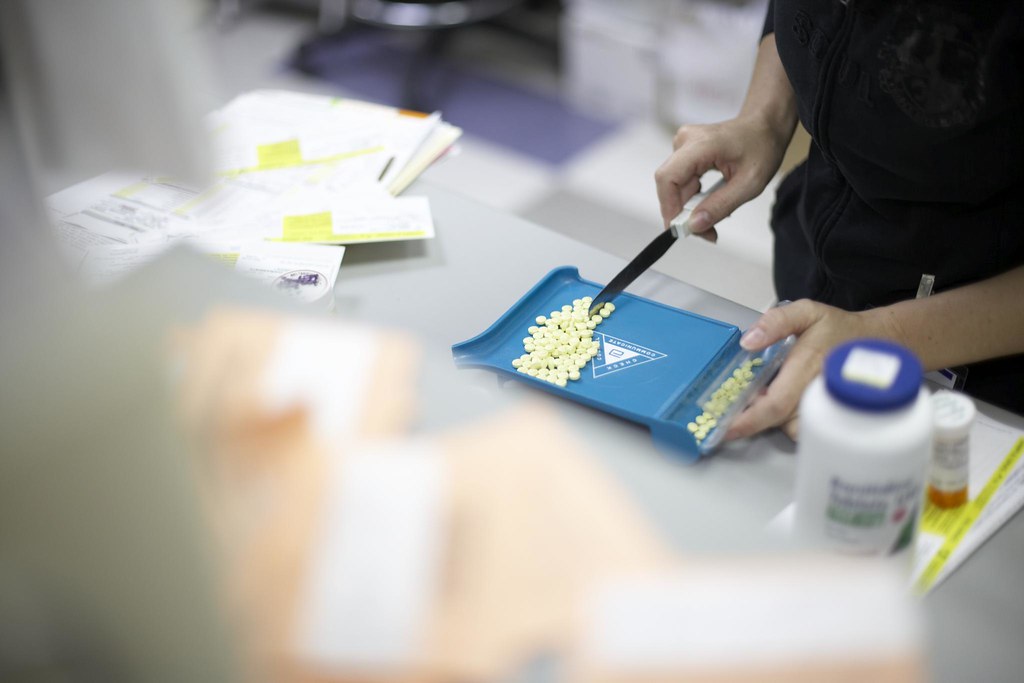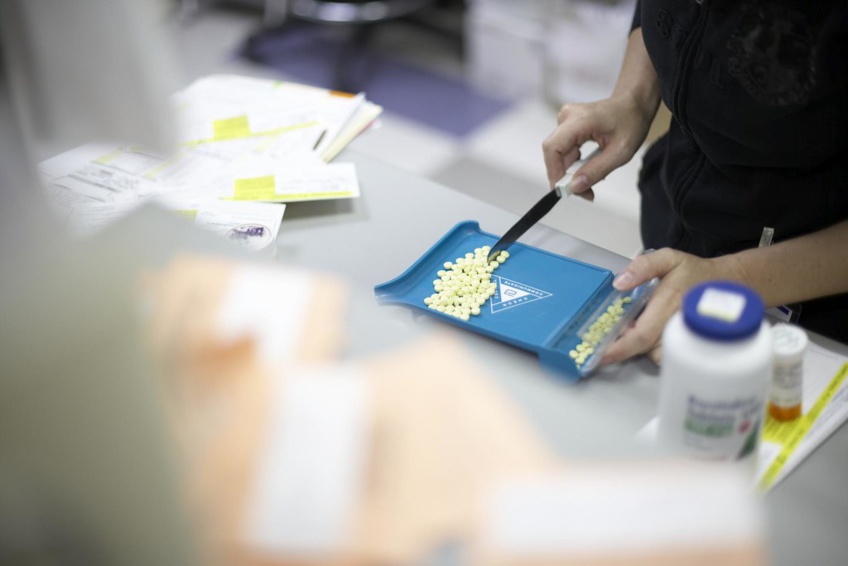Direct Relief, a prominent organization, has made a significant contribution to the U.S. healthcare system by donating and delivering over $2 billion worth of medicine and medical supplies since 2008. This effort has been instrumental in bridging the persistent gaps in healthcare provision across the country, making Direct Relief the leading conduit for prescription medication and medical supply donations in the U.S.
The organization’s donated medicines and supplies primarily reach individuals in medically underserved communities across the U.S. through a vast network of local, non-profit health clinics. These clinics are crucial components of the nation’s healthcare safety net.
A significant portion of the donations, amounting to over $1 billion, has been directed towards community health centers (also known as Federally Qualified Health Centers or FQHCs). These centers provide primary care to 31.5 million Americans, which is roughly one in 11 individuals, in medically underserved communities. Direct Relief has established partnerships with over 1,000 of these FQHCs, with an average partnership duration of nine years.
In addition, Direct Relief has donated over $1 billion in medical aid to free and charitable clinics and pharmacies. These establishments, often run by volunteers, provide care to individuals who have limited alternatives. In 2022, these clinics served 1.7 million patients in the U.S., 93% of whom did not have any form of public or private health insurance.
“Direct Relief is a huge part of how we provide medication access to our patients, particularly insulin,” said Megan Doerr, Vice President, Strategy & Operations at CommunityHealth, a free clinic in Chicago.
“Medication access and adherence is crucial to overall health, and being able to offer patients medications for free is invaluable. It seems almost too good to be true for individuals that hear about our services, that they're going to be able to manage their chronic diseases free of charge and not have to choose between filling their medications and paying rent or getting food.”
Amy Simmons Farber, who serves as the Associate Vice President at the National Association of Community Health Centers (NACHC), has acknowledged the significant role that Direct Relief played in ensuring the continued operation of health centers during the onset of the Covid-19 pandemic.
“The early days of the pandemic were an extraordinary time in which community health centers mobilized and in a matter of days transformed their clinical practice. With a scarcity of resources, health centers launched testing sites, converted their facilities, transitioned to virtual visits, and diverted nonacute Covid cases from overwhelmed hospitals. Direct Relief came through with a critically needed solution, donating PPE and medicines and dollars, and that was amazingly helpful to these health centers in keeping their doors open.”
"Direct Relief is a true champion and friend of free and charitable clinics," said Nicole Lamoureux, President & CEO of the National Association of Free & Charitable Clinics (NAFC). "We often say free and charitable clinics feel like the healthcare world's best kept secret, but Direct Relief’s consistent commitment and support make us feel seen, known, and appreciated. We would not be able to support our members like we do without Direct Relief."
Direct Relief has several ongoing programs in the U.S., including:
The organization’s donated medicines and supplies primarily reach individuals in medically underserved communities across the U.S. through a vast network of local, non-profit health clinics. These clinics are crucial components of the nation’s healthcare safety net.
A significant portion of the donations, amounting to over $1 billion, has been directed towards community health centers (also known as Federally Qualified Health Centers or FQHCs). These centers provide primary care to 31.5 million Americans, which is roughly one in 11 individuals, in medically underserved communities. Direct Relief has established partnerships with over 1,000 of these FQHCs, with an average partnership duration of nine years.
In addition, Direct Relief has donated over $1 billion in medical aid to free and charitable clinics and pharmacies. These establishments, often run by volunteers, provide care to individuals who have limited alternatives. In 2022, these clinics served 1.7 million patients in the U.S., 93% of whom did not have any form of public or private health insurance.
“Direct Relief is a huge part of how we provide medication access to our patients, particularly insulin,” said Megan Doerr, Vice President, Strategy & Operations at CommunityHealth, a free clinic in Chicago.
“Medication access and adherence is crucial to overall health, and being able to offer patients medications for free is invaluable. It seems almost too good to be true for individuals that hear about our services, that they're going to be able to manage their chronic diseases free of charge and not have to choose between filling their medications and paying rent or getting food.”
Amy Simmons Farber, who serves as the Associate Vice President at the National Association of Community Health Centers (NACHC), has acknowledged the significant role that Direct Relief played in ensuring the continued operation of health centers during the onset of the Covid-19 pandemic.
“The early days of the pandemic were an extraordinary time in which community health centers mobilized and in a matter of days transformed their clinical practice. With a scarcity of resources, health centers launched testing sites, converted their facilities, transitioned to virtual visits, and diverted nonacute Covid cases from overwhelmed hospitals. Direct Relief came through with a critically needed solution, donating PPE and medicines and dollars, and that was amazingly helpful to these health centers in keeping their doors open.”
"Direct Relief is a true champion and friend of free and charitable clinics," said Nicole Lamoureux, President & CEO of the National Association of Free & Charitable Clinics (NAFC). "We often say free and charitable clinics feel like the healthcare world's best kept secret, but Direct Relief’s consistent commitment and support make us feel seen, known, and appreciated. We would not be able to support our members like we do without Direct Relief."
Direct Relief has several ongoing programs in the U.S., including:
- ReplenishRx: This program offers a simplified method for pharmaceutical companies to donate their products to individuals without health insurance or other means to pay for them, through safety net clinics. It aims to reduce administrative burdens and prevent patients from losing access.
- Donor-funded Innovation Awards: These awards provide flexible funding to safety net providers for the development and expansion of programs that best address community needs. A total of $18 million has been awarded to health centers, free and charitable clinics, and women’s health centers, with support from AmerisourceBergen, Baxter, Bayer, BD, Eli Lilly, Pfizer, and Teva.
- Direct Relief’s Fund for Health Equity: This fund provides flexible philanthropic funds that enable health centers to concentrate on high-value efforts that are not easily funded from existing revenue streams. The Fund has awarded $43.7 million in grants.
- Power for Health: Recognizing that power is essential for the provision of critical health services, this initiative provides clean, renewable backup power to community health centers and free clinics. This ensures they can deliver critical healthcare services during power outages.
One example of these programs in action is AccessHealth, an FQHC serving two counties west of Houston. They use a mobile clinic, donated by Direct Relief, to bring care to its patients. This mobile clinic is used to hold back-to-school health fairs each August, serving about 2,000 families. They provide necessary immunizations for children to attend school, along with health screenings, eye exams, and dental screenings. About half of the patients it serves lack any form of health insurance. In 2023, through November, Texas disenrolled 1.4 million people, which is 64% of all enrollees, from its Medicaid program, the highest number and largest proportion of any state, according to KFF.
“The funding Direct Relief has given us for the mobile health unit allows us to work in rural communities, both on the medical and dental side,” said Mike Dotson, CEO of AccessHealth. “The need for transportation highly affects the folks that we see, so being able to use that resource is a big win for us, and it helps our patients in a really, really positive way.”
Direct Relief has several ongoing programs in the U.S., including:
“The funding Direct Relief has given us for the mobile health unit allows us to work in rural communities, both on the medical and dental side,” said Mike Dotson, CEO of AccessHealth. “The need for transportation highly affects the folks that we see, so being able to use that resource is a big win for us, and it helps our patients in a really, really positive way.”
Direct Relief has several ongoing programs in the U.S., including:
- ReplenishRx: This program offers a simplified method for pharmaceutical companies to donate their products to individuals without health insurance or other means to pay for them, through safety net clinics. It aims to reduce administrative burdens and prevent patients from losing access.
- Donor-funded Innovation Awards: These awards provide flexible funding to safety net providers for the development and expansion of programs that best address community needs. A total of $18 million has been awarded to health centers, free and charitable clinics, and women’s health centers, with support from AmerisourceBergen, Baxter, Bayer, BD, Eli Lilly, Pfizer, and Teva.
- Direct Relief’s Fund for Health Equity: This fund provides flexible philanthropic funds that enable health centers to concentrate on high-value efforts that are not easily funded from existing revenue streams. The Fund has awarded $43.7 million in grants.
- Power for Health: Recognizing that power is essential for the provision of critical health services, this initiative provides clean, renewable backup power to community health centers and free clinics. This ensures they can deliver critical healthcare services during power outages.
One example of these programs in action is AccessHealth, an FQHC serving two counties west of Houston. They use a mobile clinic, donated by Direct Relief, to bring care to its patients. This mobile clinic is used to hold back-to-school health fairs each August, serving about 2,000 families. They provide necessary immunizations for children to attend school, along with health screenings, eye exams, and dental screenings. About half of the patients it serves lack any form of health insurance. In 2023, through November, Texas disenrolled 1.4 million people, which is 64% of all enrollees, from its Medicaid program, the highest number and largest proportion of any state, according to KFF.


 Direct Relief’s Impact: Bridging Healthcare Gaps with Over $2 Billion in Donations
Direct Relief’s Impact: Bridging Healthcare Gaps with Over $2 Billion in Donations





 Companies
Companies